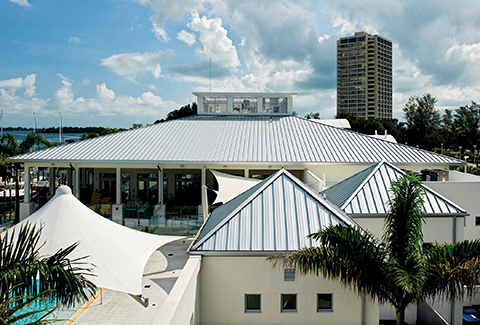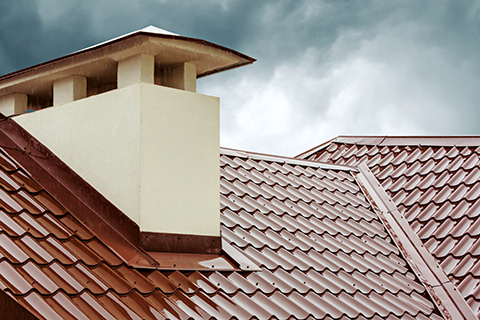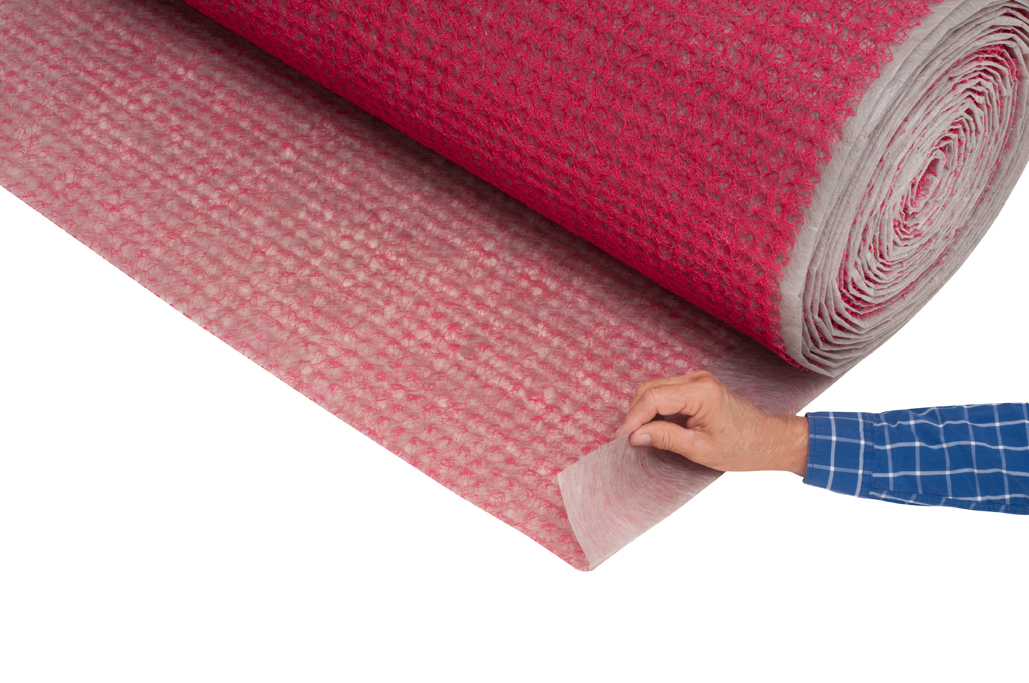The benefits of metal roofs and coatings
Common resins used in the manufacture of paint coatings for metal roofing include:
- plastisols: these are well-suited for areas with a need for chemical-resistance or barrier properties are (e.g. industrial applications);
- polyester and resins: used in many different metal roofing applications, but are formulation-specific in their balance of performance and economic criteria;
- polyvinylidene fluoride (PVDF) resins: withstanding extended exterior exposure to water, humidity, temperature, ultraviolet (UV) light, oxygen, and atmospheric pollutants frequently specified for metal roofs—for a standard, high-performance PVDF resin-based coating, 70 percent of the resin is PVDF and 30 percent is acrylic;
- FEVE resins are resistant to the exterior elements, and have a low permeability to oxygen, water, and chloride—they also offer a higher gloss and wider color range compared with PVDF resin-based coatings on metal roofs; and
- silicone-modified polyester (SMP) coatings: not as formulation-specific as polyester and acrylic, more economical than PVDF and fluoroethylene vinyl ether (FEVE) resins, offer good weather resistance, and are harder than most other film options available for metal roofing.

These coatings discussed are original equipment manufacturer (OEM) factory-applied. PVDF and SMP are the most common coatings for metal roofing in the industry.
Topcoat pigments yield the color of paint. In addition to helping provide the aesthetic of an application, pigment also provides opacity by either absorbing or reflecting light. This helps ensure a longer life for the coating. The pigments used will also affect the coating system’s resistance to fade. Organic pigments have a bright appearance, but a low resistance to fade. Inorganic, or ceramic, pigments are less bright and more earth-toned, but have a high resistance to fade.
The solvent used in exterior coatings primarily serves as a diluent to maintain and control the paint’s viscosity for ease of application. As the solvent dissolves, it disperses solid resins to help the paint coalesce. During the curing process of a metal roof coating, the solvents are safely captured and incinerated, leaving the pigment and resins on the substrate.
‘Additives’ is an umbrella term encompassing extra agents that can be formulated into paint to enhance its performance. Some additives can be used to control foam, flow, and leveling of the paint as it is being applied. Viscosity modifiers are used to improve settling and catalysts are added to accelerate a chemical reaction.
Performance expectations
When selecting an exterior coating for a metal roof system, it is important to know how it stands up to the potentially destructive factors of the outdoors. A reputable vendor for coatings will offer warranties on all of its products, as well as CSI three-part format specifications to ensure optimal performance.

Coating manufacturers’ specifications will reference ASTM test protocols for evaluating such qualities as:
- specular gloss;
- color consistency;
- adhesion;
- film hardness and thickness;
- flexibility;
- water-resistance;
- abrasion-resistance;
- chemical-resistance;
- salt-spray and corrosion-resistance; and
- chalking.
For example, chalking occurs when the resin system at the surface of the paint’s finish starts to degrade. This largely is caused by exposure to UV rays. As the resin system breaks down, resin particles take on a white appearance, and imbedded pigment particles lose their adhesion to the film. With this breakdown in adhesion, particles begin to come off the film’s surface, referred to as chalk.
Fading is caused when substances in the environment attack the pigment in the paint. This leads to a change in the color of the paint itself. The chemical spot test determines a film’s resistance to high acidic or corrosive conditions. A concentrated acid or base is dropped onto the film and covered with a watch glass. After a prescribed period, the panel is wiped off and examined for damage or discoloration. FEVE resins are particularly resistant to corrosive conditions, and their inert quality means they will not change during a chemical spot test.



